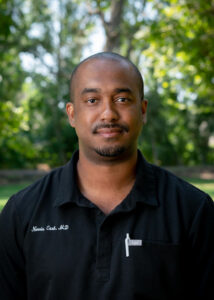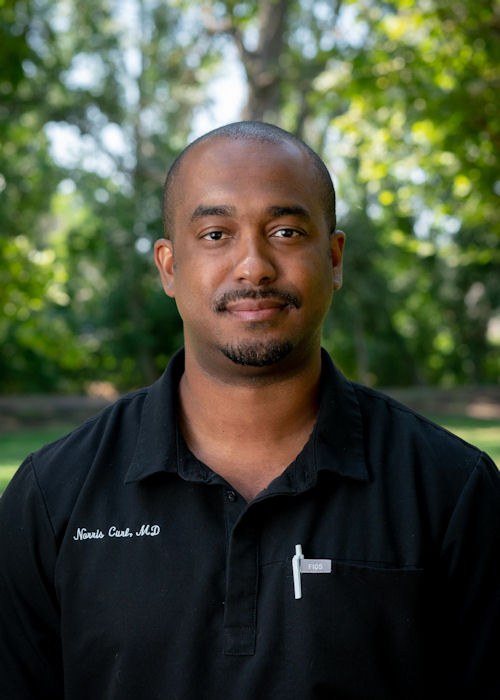Bipolar disorder is often misunderstood. Many people wonder if recovery is possible or if living with bipolar disorder means a lifetime of struggle. The answer is more nuanced than a simple yes or no.
Recovery from bipolar disorder does not mean the condition disappears. Instead, it means learning to manage symptoms and improve quality of life.
Understanding the nature of bipolar disorder and what recovery really means can help people make informed choices. The journey is unique to each individual, but support and evidence-based care can make a difference. At First Steps Recovery, we understand the challenges of managing both mental health conditions and substance use, providing comprehensive support for those facing these dual challenges.
What Does Bipolar Disorder Mean for Recovery?
Bipolar disorder is a mental health condition that causes extreme changes in mood, energy, and activity levels. People with this condition experience periods of depression and periods of elevated mood, called mania or hypomania.
When someone asks, “Can you recover from bipolar disorder?” they’re usually wondering if they can get back to feeling normal. The truth is, there’s no cure for bipolar disorder, but recovery is absolutely possible. Recovery doesn’t mean the condition goes away forever – it means learning to manage symptoms so well that they don’t control your life anymore.
Recovery from bipolar disorder happens in different ways:
- Symptom management: Learning to control mood swings, feelings of depression, and manic episodes
- Daily functioning: Getting back to work, school, relationships, and regular activities
- Personal growth: Finding meaning and purpose beyond the diagnosis
Is Bipolar Disorder Curable?

Bipolar disorder is what doctors call a chronic condition. This means it typically lasts throughout a person’s life. Currently, no cure makes bipolar disorder disappear completely.
A cure would mean all symptoms are gone forever with no need for treatment. Management, on the other hand, means using treatments and lifestyle changes to control symptoms while living a full life.
Here’s what’s encouraging: recent research shows that many people do very well with proper treatment. About 44% of people with bipolar disorder experience what’s called remission – meaning they don’t have enough symptoms to meet the diagnosis criteria for a full year. Even better, about 23% reach “complete mental health,” which includes being symptom-free plus having good emotional and social well-being.
Treatment can significantly reduce the number and intensity of mood episodes. Many people have long periods where symptoms are mild or barely noticeable, especially when they stick to their bipolar disorder treatment plan consistently.
How Common is Recovering from Bipolar Depression?
The numbers on bipolar recovery are actually more hopeful than many people realize. Research from 2024 found that 44% of people diagnosed with bipolar disorder had no significant symptoms for an entire year. About 23% achieved what researchers call “complete mental health” – meaning they were both symptom-free and reported feeling good about their lives overall.
Recovery rates can vary depending on the type of bipolar disorder someone has. Bipolar I involves more severe manic episodes, while Bipolar II has milder “up” periods but often more frequent depression. Both types can achieve recovery, though the path may look different for each person.
Several factors make recovery more likely:
- Early treatment: Getting help soon after symptoms start
- Consistent care: Following through with medication and therapy appointments
- Strong support: Having family, friends, or support groups to lean on
- Healthy habits: Regular sleep, exercise, and stress management
What Bipolar Disorder Looks Like
Bipolar disorder shows up differently in different people, but there are common patterns. The main feature is distinct periods where mood, energy, and behavior change dramatically from a person’s usual state.
During manic or hypomanic episodes, someone might experience:
- Feeling unusually happy, energetic, or irritable
- Needing much less sleep than normal
- Talking very fast or having racing thoughts
- Making risky decisions without thinking them through
- Feeling like they can do anything
During depressive episodes, the same person might have:
- Deep sadness or feeling empty
- Loss of interest in things they usually enjoy
- Extreme tiredness or low energy
- Trouble concentrating or making decisions
- Changes in appetite or sleep patterns
Getting diagnosed involves meeting with a mental health professional who will ask detailed questions about mood patterns, family history, and how symptoms affect daily life. Sometimes this process takes time because bipolar disorder can look like other conditions.
When someone has both bipolar disorder and problems with drugs or alcohol, it’s called a dual diagnosis. This combination is actually quite common and requires specialized treatment that addresses both issues together.
Treatments That Can Help with Bipolar Recovery

Effective treatment for bipolar disorder usually combines several approaches. Most people do best when they use medication, therapy, and lifestyle changes together.
Medication Options
Mood stabilizers are the most common medications for bipolar disorder. Lithium is one of the oldest and most studied options. Other medications include anticonvulsants like valproate and newer antipsychotic medications like quetiapine.
These medications work by helping to even out the brain chemistry that contributes to mood swings. Finding the right medication often takes time – what works for one person might not work for another. Most medications take several weeks to show their full effects.
Therapy Approaches
- Cognitive Behavioral Therapy (CBT): Helps identify and change unhelpful thought patterns
- Dialectical Behavior Therapy (DBT): Teaches skills for managing intense emotions
- Family therapy: Helps improve communication and support within families
- Group therapy: Provides support from others facing similar challenges
Lifestyle Support
Daily habits play a big role in managing bipolar disorder:
- Sleep routine: Going to bed and waking up at consistent times
- Regular exercise: Physical activity can help stabilize mood
- Stress management: Learning healthy ways to handle life’s pressures
- Avoiding substances: Alcohol and drugs can trigger mood episodes
Daily Strategies for Staying Stable
Managing bipolar disorder day-to-day involves paying attention to patterns and having a plan for when things get difficult.
Building Routine
A regular daily schedule helps keep the mood more predictable. This might include set times for meals, work, exercise, and sleep. Routines don’t have to be rigid – they just provide structure that can prevent mood swings from being triggered by chaos or unpredictability.
Spotting Warning Signs
- Changes in sleep patterns
- Increased or decreased energy
- Shifts in social behavior
- Changes in thinking speed or clarity
Managing Stress
Stress is a major trigger for bipolar episodes. Effective stress management techniques include:
- Deep breathing exercises: Can be done anywhere when feeling overwhelmed
- Regular breaks: Taking time to rest during busy periods
- Problem-solving: Breaking big problems into smaller, manageable steps
- Social support: Talking to trusted friends or family when stressed
Signs of Making Progress in Bipolar Disorder
Recovery from bipolar disorder isn’t always obvious day-to-day, but there are clear signs that things are improving.
The most important indicators include having fewer mood episodes, being able to maintain daily routines, and feeling more in control of your life. Other positive signs include better relationships, returning to work or school, and feeling hopeful about the future.
Progress often happens gradually:
- Fewer episodes: Mood swings become less frequent or less severe
- Faster recovery: Bouncing back more quickly when episodes do occur
- Better functioning: Maintaining responsibilities and relationships
- Improved insight: Understanding your own patterns and triggers better
Where to Find Support for Bipolar Disorder

Support for bipolar disorder comes from many sources. Professional help includes psychiatrists, therapists, and support groups led by mental health professionals.
National organizations provide resources and community connections:
- Depression and Bipolar Support Alliance (DBSA) offers support groups and educational materials
- The National Alliance on Mental Illness (NAMI) provides family education and advocacy
- Mental Health America (MHA) has screening tools and local resources
Online communities can provide 24/7 support and connection with others who understand the challenges of bipolar disorder. Many people find it helpful to combine online support with in-person groups or professional treatment.
For people dealing with both bipolar disorder and substance use issues, specialized dual diagnosis programs address both conditions together. This integrated approach often leads to better outcomes than treating each condition separately.
Moving Forward with Hope
Recovery from bipolar disorder is possible, though it looks different for everyone. The research shows that nearly half of people with bipolar disorder can go a full year without significant symptoms, and about one in four achieve what researchers call complete mental health.
Recovery doesn’t mean perfection. It means learning to manage symptoms well enough that they don’t control your life. Many people with bipolar disorder go on to have successful careers, meaningful relationships, and fulfilling lives.
The key is finding the right combination of treatment, support, and self-management strategies. This process takes time and patience, but the outcomes can be life-changing. First Steps Recovery specializes in helping people with co-occurring mental health and substance use challenges, providing integrated care that addresses all aspects of recovery.
Bipolar Disorder Recovery FAQs
Can people with bipolar disorder maintain full-time jobs?
Many people with bipolar disorder work full-time successfully when their symptoms are well-managed through treatment, and they have workplace accommodations if needed.
How long does it typically take to find the right bipolar disorder medication?
Finding effective medication can take several months to over a year, as doctors often need to try different options and dosages to find what works best for each individual.
Can alcohol or drug use trigger bipolar disorder episodes?
Yes, substance use can trigger mood episodes and interfere with bipolar disorder medications, making symptoms harder to control and recovery more difficult.
Does First Steps Recovery treat both bipolar disorder and addiction?
First Steps Recovery provides integrated treatment for people with both mental health conditions and substance use disorders, addressing both issues simultaneously with coordinated care teams.
Dr. Curl is the Medical Director and primary on-site provider for First Steps Recovery. He is a Board Certified Internist and Addiction Medicine Specialist having attended the David Geffen School of Medicine at UCLA and completing his residency at Mount Auburn Hospital with Harvard Medical School. Following several years work as an internist and physiatrist (physical medicine and rehabilitation). Dr. Curl completed the Addiction Medicine Fellowship at Howard University in Washington DC and participated as a RAM Scholar (Research in Addiction Medicine). While part of the fellowship, Dr. Curl pursued research investigating the barriers to expanding and improving medication for opioid use disorder. Following his fellowship, Dr. Curl spearheaded the Opiate Use Disorder outpatient clinic and worked in the Department of Psychiatry and Behavioral Sciences within the Howard University Hospital. In 2023, Dr. Curl completed his Board Certification in Addiction Medicine.





